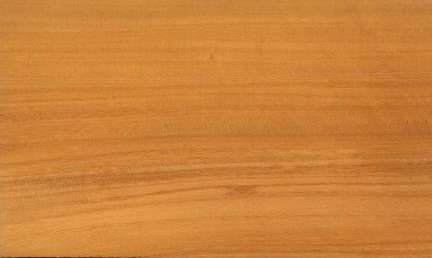
San Domingo boxwood (Phyllostylon brasiliensis)
Family: Ulmaceae
Common names: Baitoa, Bois Blanc, Boxwoad, Canche, Cara tibama, Ceron, Ibira-catu, Ibiracatu, Jatia, Membrillo, Ot-te, Otelom, Palo amarillo, Palo blanco, Palo de Ianza Blanco, Palo de lanza, Palo de lanza blanco, Palo lanza, Palo lanza negro, Pan branco, Pau branco, Sabonero, San Domingo boxwood, Seron, Tala grande, Vareteiro, West Indian boxwood, Yao-si-y-guazu, Yva-si-yguazu
Distributed in: Argentina, Belize, Bolivia, Brazil, Colombia, Columbia, Costa Rica, Cuba, Dominican Republic, Ecuador, Guatemala, Haiti, Honduras, Mexico, Nicaragua, Panama, Paraguay, Peru, Venezuela (Central America, Latin America, Oceania and S.E. Asia)
Distribution overview: The species grows from Cuba, Hispaniola, and southern Mexico to Colombia, Venezuela, southern Brazil, Paraguay, and Argentina. It is often found in pure stands.
Common uses: Agricultural implements, Bobbins, Carvings, Chessmen, Croquet mallets, Drum sticks, Flooring, Fuelwood, Furniture, Handles, Heavy construction, Joinery, Light construction, Mathematical instruments, Mine timbers, Musical instruments , Musical instruments, Musical instruments: piano, Organ pipes, Piano keys, Pianos , Plywood, Railroad ties, Rulers, Scientific instruments, Shafts/Handles, Shuttles, Sills, Sounding boards, Specialty items, Spindles, Spools, Sporting Goods, Textile equipment, Tool handles, Turnery, Vehicle parts, Veneer: decorative, Violin bows, Violin, Xylophones
Environment profile: Status within its natural growth range has not been officially assessed
Tree size: Trunk diameter is 100-150 cm
Colors: the heart isYellow, Yellow to golden-yellow to orangeand the sapwoodYellow, Yellowish.The grain isWavy, the textureUniformand the lusterMedium
Natural durability: Susceptible to attack from powder post (Lyctid & Bostrychid) beetles, Susceptible to insect attack
Odor: No specific smell or taste
Kiln Schedules: US=T2B2
Kiln Drying Rate: Naturally dries slowly
Drying Defects: Distortion, Splitting
Ease of Drying: Slowly
Tree Identification: Bole/stem form is misshapen
Comments: General finishing qualities are rated as good The wood is similar in properties to other Boxwoods (Buxus , Gossypiospermum ). Boxwood was originally the trade name of Buxus sempervirens from Europe and eastern Asia. The trade name has been extended to include other species that are botanically dissimilar but which resemble true boxwood in general characteristics. San Domingo boxwood (Phyllostylon brasiliensis ) is among the more important of the boxwood-like species
Blunting Effect: Little
Boring: Fairly easy to very easy
Carving: Fairly Easy to Very Easy
Cutting Resistance: Moderate to saw
Gluing: Fairly Easy to Very Easy
Mortising: good
Moulding: Moulds well (70+ % of pieces will yield good to excellent )
Movement in Service: Moulds well (70+ % of pieces will yield good to excellent )
Nailing: Possible if prebored, Very Good to Excellent
Planing: Very Good to Excellent
Resistance to Impregnation: Resistant sapwood
Response to hand tools: Responds well to hand tools
Routing recessing: Routs well
Sanding: Fairly Easy to Very Easy
Steam bending: Fair to Good Results
Screwing: Fairly Easy to Very Easy, Very Good to Excellent Results; Turning: Very Good to Excellent Results
Painting: Very Good to Excellent; Polishing: Satisfactory; Staining: Very Good to Excellent; Varnishing: Very Good to Excellent;
- Numerical data Metric
- Numerical data English
- Strength properties
- References
 |
 |
 |
 |
| Item |
Green |
Dry |
Metric |
| Specific Gravity |
0,71 |
|
|
| Density |
|
929 |
kg/m3 |
| Bending Strength |
|
|
kg/cm2 |
| Crushing Strength |
|
|
kg/cm2 |
| Hardness |
|
|
kg |
| Impact Strength |
|
|
cm |
| Shearing Strength |
|
|
kg/cm2 |
| Stiffness |
|
|
1000 kg/cm2 |
| Tangential Shrinkage |
|
|
% |
| Radial Shrinkage |
|
|
% |
| Weight |
913 |
737 |
kg/m3 |
| Maximum Load |
|
|
cm-kg/cm3 |
| Toughness |
|
|
cm-kg |
| Static Bending |
|
|
kg/cm2 |
|
 |  |  |  | | Item | Green | Dry | English | | Density | | 58 | lbs/ft3 | | Specific Gravity | 0.71 | | | | Weight | 57 | 46 | lbs/ft3 | | Radial Shrinkage | 4 | | % | |
53-60 lbs/cu. ft.
53-60 lbs/cu. ft.
Density (dry weight) = 61-67 lbs/cu. ft.
Density (dry weight) = 61-67 lbs/cu. ft.
Shrinkage, Radial = small
Moderate
Large
Fairly large
67-75 lbs/cu. ft.
67-75 lbs/cu. ft.
46-52 lbs/cu. ft.
46-52 lbs/cu. ft.
The weight is very high. The species has very high density.
Berni, C.A., Bolza, E., Christensen, F.J.,1979,South American Timbers - The Characteristics, Properties and Uses of 190,Species,C.S.I.R.O Div. Building ResearchBois et Forets des Tropiques,1954,Mukulungu (Autranella congolensis,Bois et Forets des Tropiques,36,pp25-28Boone, R.S., C.J. Kozlik, P.J. Bois, E.M. Wengert. 1988. Dry Kiln Schedules for Commercial Hardwoods - Temperate and Tropical. USDA, Forest Service, General Technical Report FPL-GTR-57, Forest Products Laboratory, Madison, Wisconsin.Brown, W.H.,1978,Timbers of the World, No. 2 South America,TRADA, Red Booklet SeriesCelulosa Argentina,1973,Libro del Arbol,Celulosa Argentina Buenos Aires 3 VolsChudnoff, M.,1984,Tropical Timbers of the World,U.S.A. Department of Agriculture, Forest Service, Forest Products,Laboratory, Madison.Clifford, N.,1953,Commercial Hardwoods - Their Characteristics Identification and,Utilization,Sir Isaac Pitman & Sons Ltd. LondonFarmer, R.H.,1972,Handbook of Hardwoods,HMSOFors, A.J.,1965,Maderas Cubanas,Inst. Nac. Ref. Agraria La HabaraHMSO. 1981. Handbook of Hardwoods, 2nd Edition. Revised by R.H. Farmer, Department of the Environment, Building Research Establishment, Princes Risborough Laboratory, Princes Risborough, Aylesbury, Buckinghamshire.Koehler, A.,1928,Tests on six Argentina Woods,Tropical Wood 2(14) pp15-20Pennington, T.D., Sarukhan, J.,1968,Manual para la Identificacion de campo de los Principales Arboles,Tropicales de Mexico,Inst. Nac. Inv. For. MexicoRecord, S.J., Garratt, G.A.,1925,Boxwoods,Yale University School of Forestry Bulletin,No.14Record, S.J., Hess, R.W.,1943,Timbers of the New World,Yale University PressRecord, S.J., Mell, C.D.,1924,Timbers of Tropical America,Yale Univ. PressRendle, B.J.,1969,World Timbers (3 Vols.,Ernest Benn Ltd. LondonSchiffino, J.,1945,Riqueza Forestal Dominicana (Three volumes,Secretaria de Estado de Agric. Ind. y TrabajoSlooten van der, H.J., Martinez, E.P.,1940,Mechanisch-technologische Untersuchungen von zwei weiteren Chileniscen,Nutzholzern,Reprint from Kolonialforstliche Mitteilungen,2(4,pp361-77Timber Development Association,1948,Some New Timbers and Their Uses No. 34,Timber Development Association Limited, London [TRADA]Tortorelli, L.,1956,Maderas y Bosques Argentinos,Editorial Acme S.A.C.I. Buenos AiresWoods, R.P.,1949,Timbers of South America,TRADA, Red Booklet Series
|








